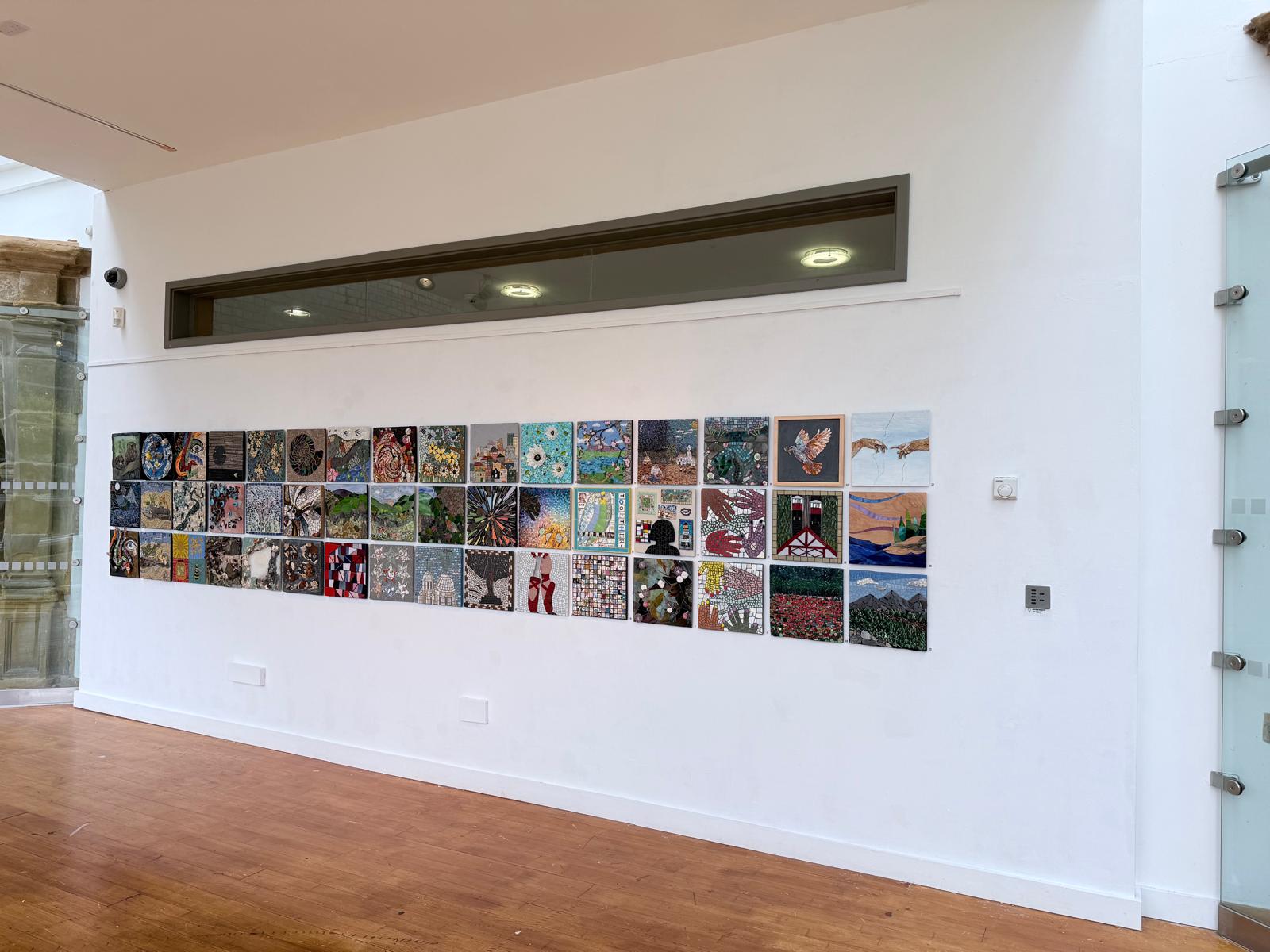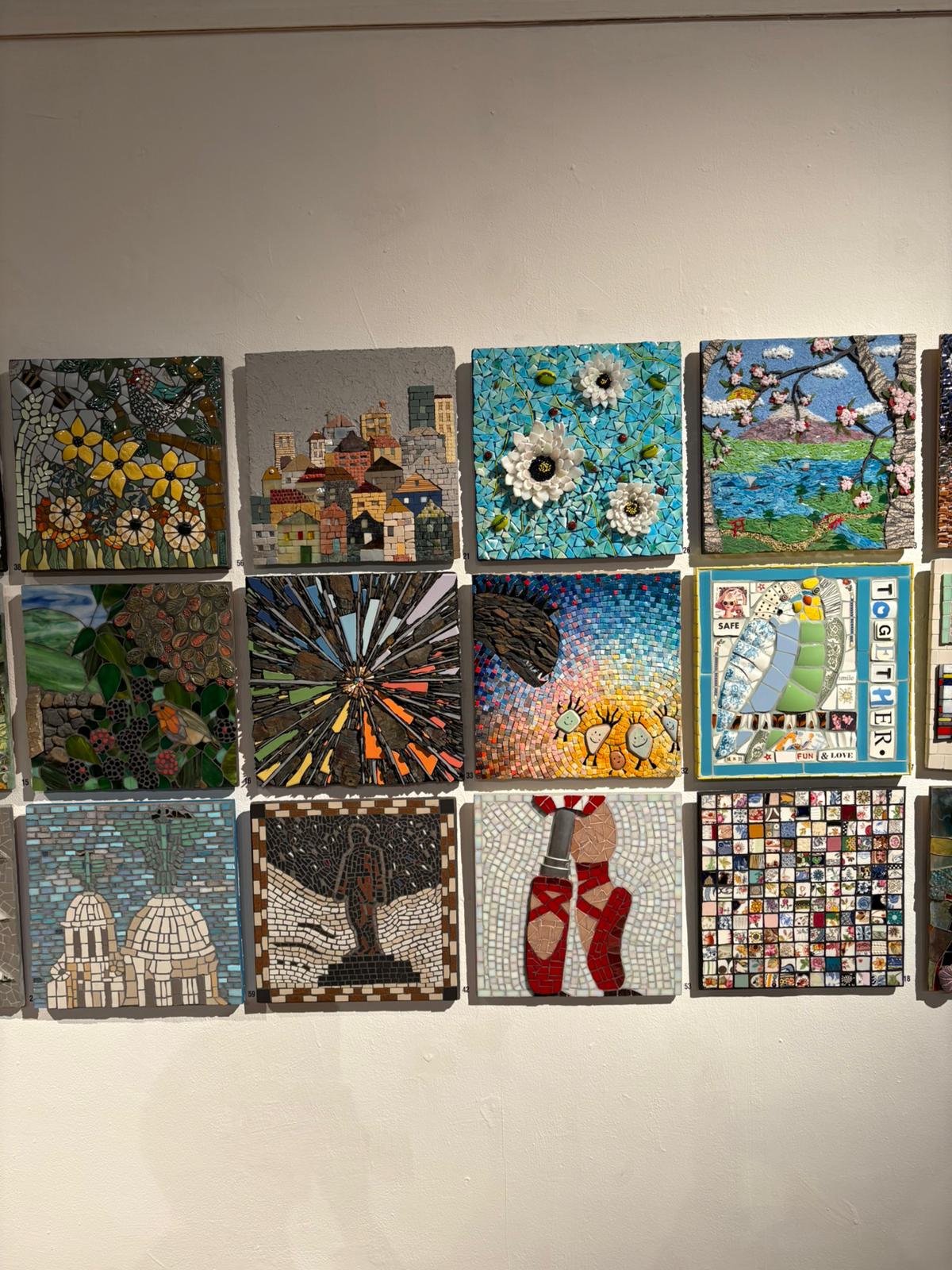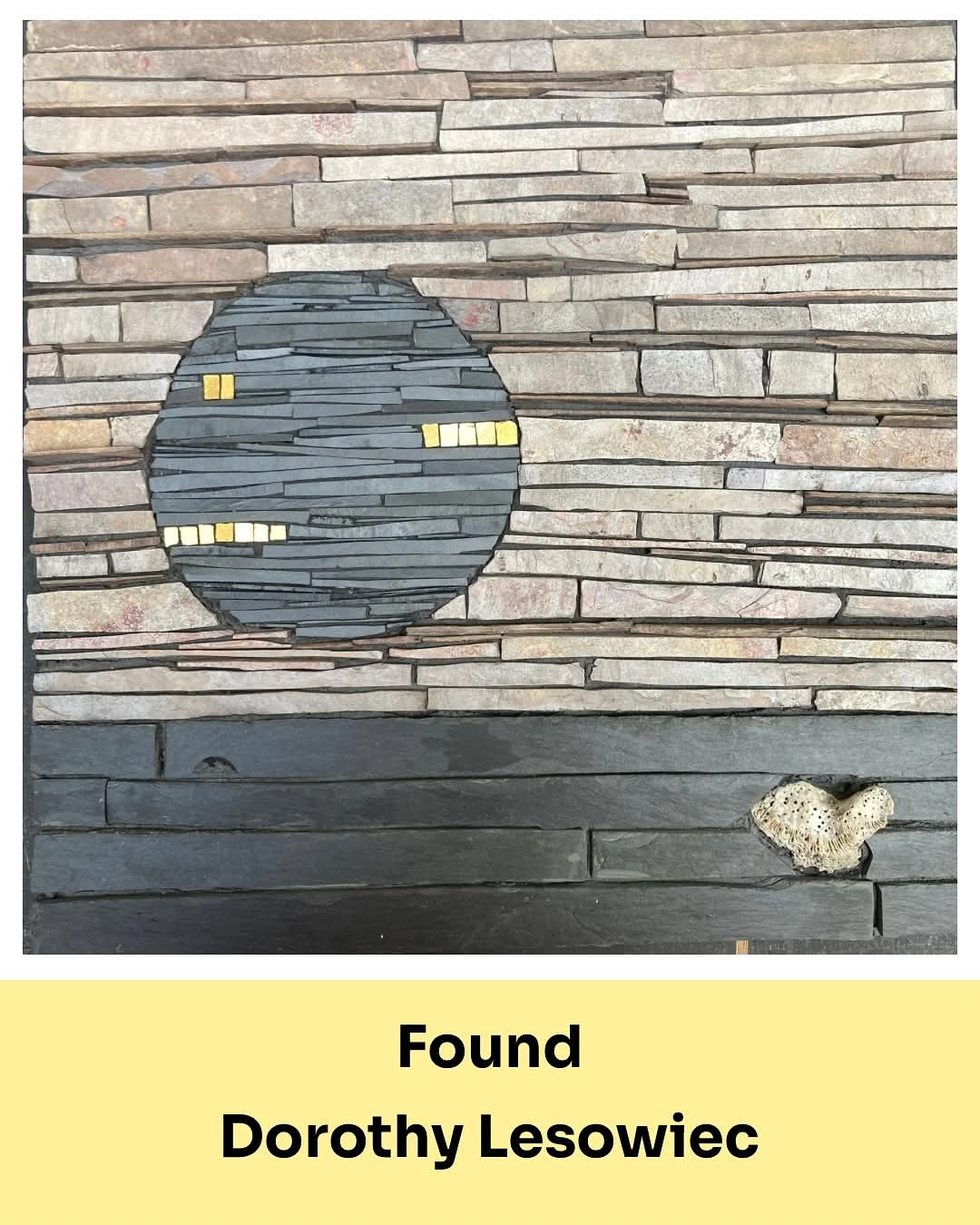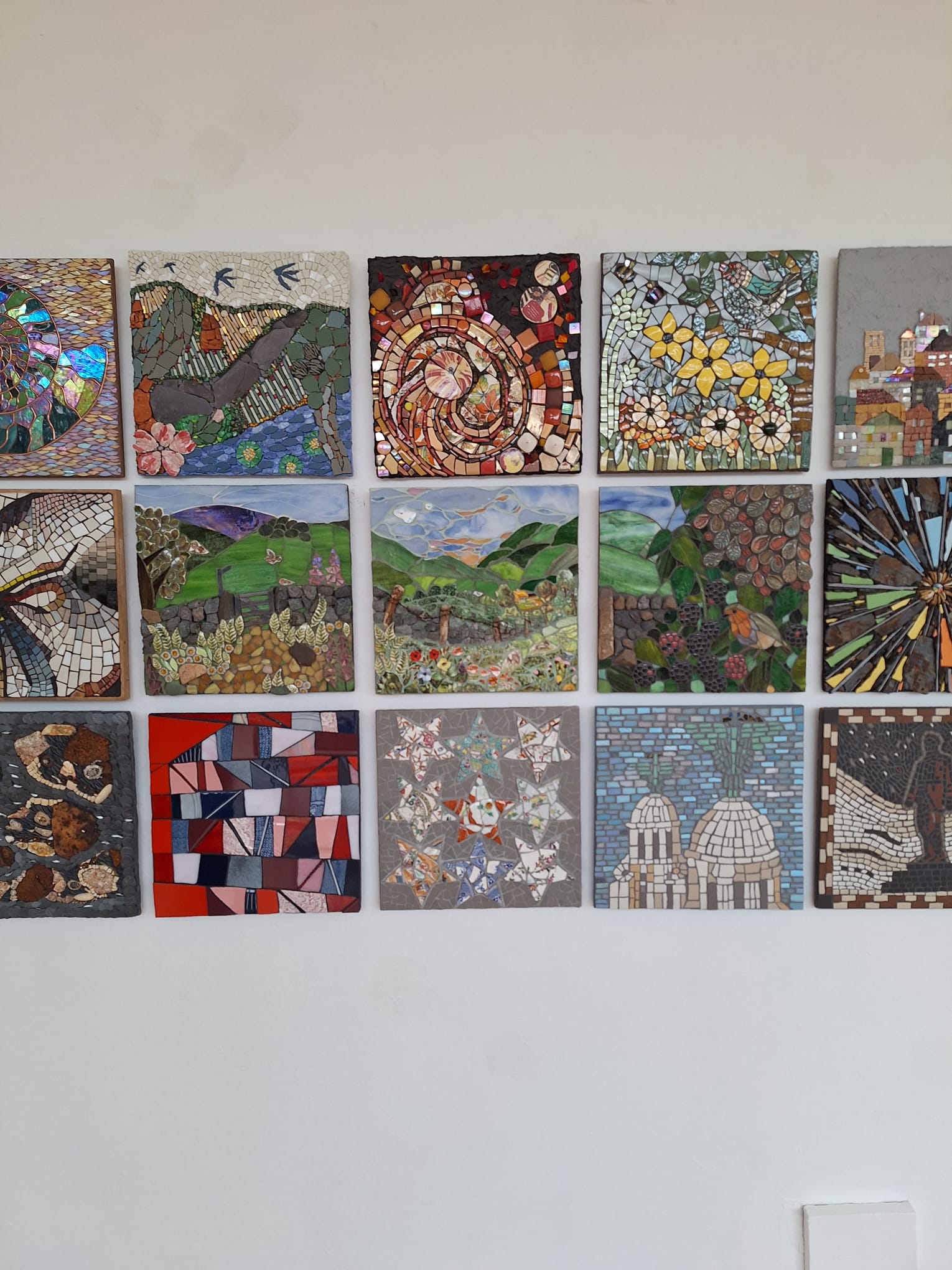‘Piece Together’ is an international exhibition of cutting-edge mosaic art, curated by the British Association for Modern Mosaic (BAMM). It represents a new era of collective authorship, where individual voices and shared creativity converge to redefine the boundaries of this timeless medium. The end result is a vibrant collection of 65 works inviting viewers into a captivating world of fine art mosaics . From glimmering tesserae that evoke light -dappled water to tactile fragments shaped into soaring birds or abstract rhythm, the collection celebrates the infinite possibilities of materials often underestimated.
There is a long-standing contradiction between the singular and collective aspects of mosaic art. The individual tesserae of a mosaic rely upon one another to create a cohesive image, as do the artist’s decisions and skills, which are influenced by traditional techniques, artistry and the time-consuming process of assembling a mosaic. In Piece Together, this duality is expanded to include the actual creation of a collective mosaic. The theme of the exhibition is collaboration and, by working together or swapping materials. This exhibition has been curated by Crescent Arts, a contemporary arts charity based in Scarborough. Each artist involved in the project exchanged either materials, ideas or portions of their work in order to create a new piece of art together. The collective aspect of the exhibition is reflected in its layout. The 65 mosaics are arranged in rows on a wall, creating a 30 cm grid of panels that function as a sole entity made up of many individual mosaics of colour and texture.
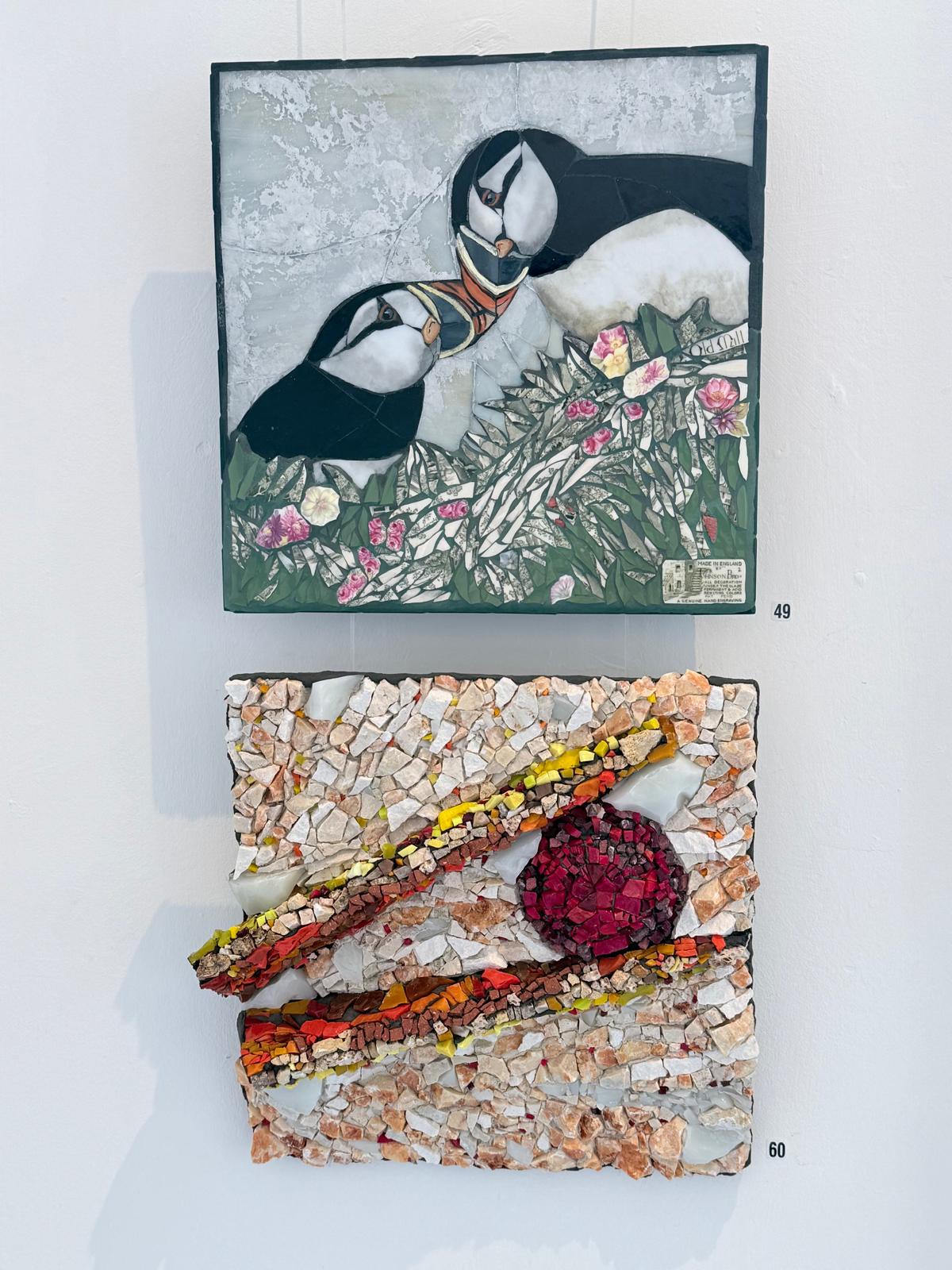

While no two panels exhibit the same language, they are part of a common vocabulary. There are mosaics that shine with glass and light, while others rest in the grounded beauty of ceramic, stone and slate. While many of the mosaics exhibit recognizable images, others blur into abstraction, where the individual tiles become the subject rather than a tool used to depict a subject. When viewed collectively, the mosaics demonstrate a medium that is liberated from its historic associations with decoration and monumentalism, and are instead using the medium to explore experimentation, environmental awareness and emotional expression.
Several works exhibited at Piece Together illustrate this new direction for the medium. For example, a delicate depiction of two puffins titled ‘Puffins – A collaboration of Sea Clowns’ by Gillian Goldsmith. The puffins are rendered delicately out of handcut stained glass, against a grey-blue sky. The precision of the cuts creates a sensation of softness, and adds to the overall impression of delicacy. Next to this piece is a more tactile abstraction of thick shards of stone and glass in reds, ochres and sulphur yellows, that push mosaic towards the realm of sculptural relief. Titled ‘The red berry’ by artist Sandrine Soubes, it depicts a bird beak holding a little berry, tenderly. The uneven surface of this work casts shadows that change throughout the day, suggesting movement and instability. The juxtaposition of these two works illustrates the curatorial approach of the exhibition, which is based on contrast. The first work celebrates representation and gentleness, while the second work celebrates material energy and fragmentation.
In addition to exploring the potential for mosaic to express narrative, several works in the exhibition use mosaic as a way to tell stories. For example, a panel depicting a crocodile, a bird and a turtle in an unlikely co-existence, demonstrates a classically-arranged composition by Judy Tocher titled ‘Reaching for the golden pear’ Each animal is represented by tiles of varying scales and tonalities, creating a dynamic rhythm within the surface. Immediately below this work is a monochromatic geometric design in black, white and ochre titled ‘Posh not posh’ by Coralie Turpin, that recalls Roman pavement motifs, but updates them with broken symmetry and varying thicknesses of stone. Both works reflect the ability of the exhibition to balance history and innovation, without favoring one over the other.
Dorothy Lesowiec’s Found brings a tender close – a deeply personal work celebrating the rediscovery of family. Gold smalti shimmers through the surface, symbolising the richness of love, belonging, and reconnection.
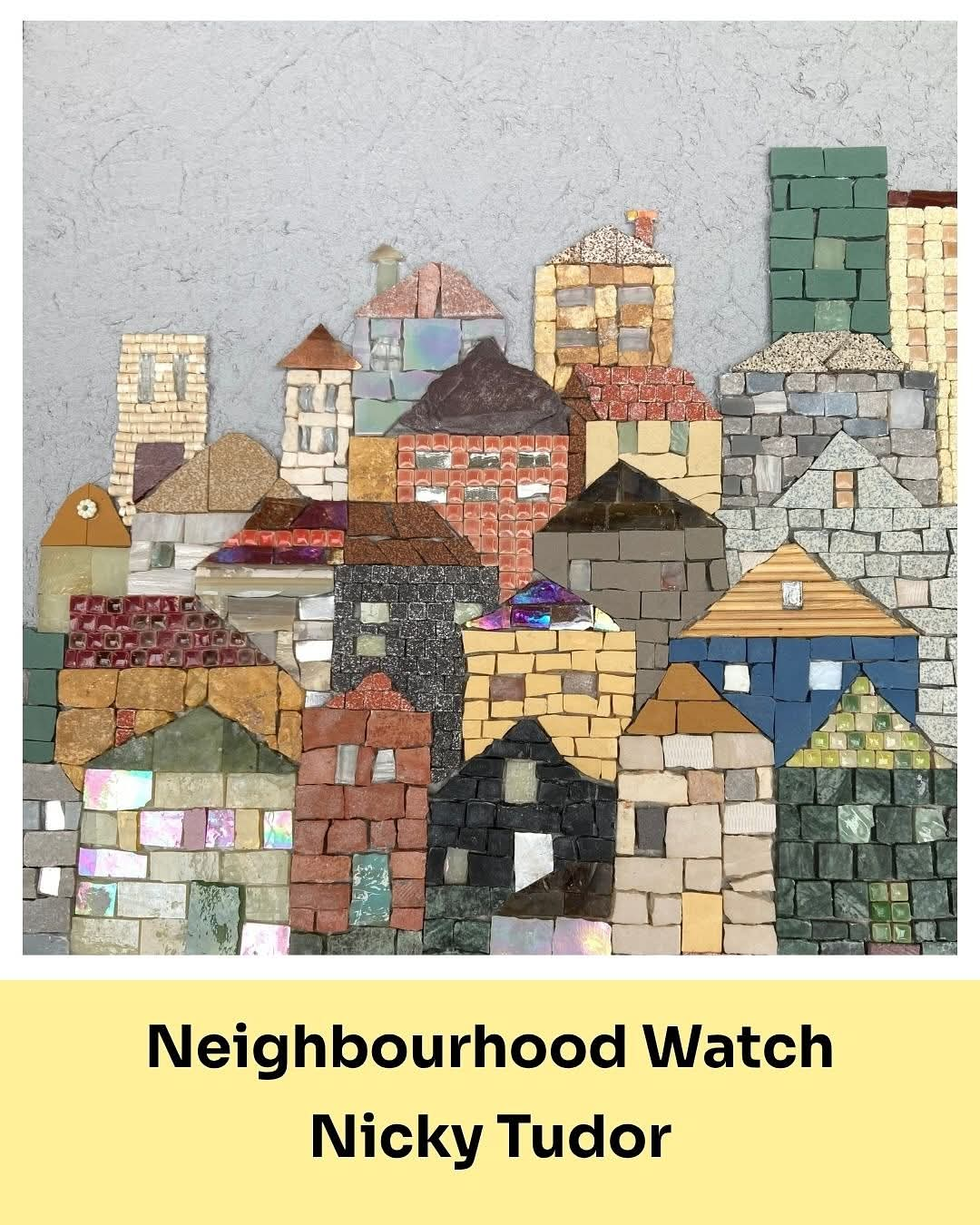
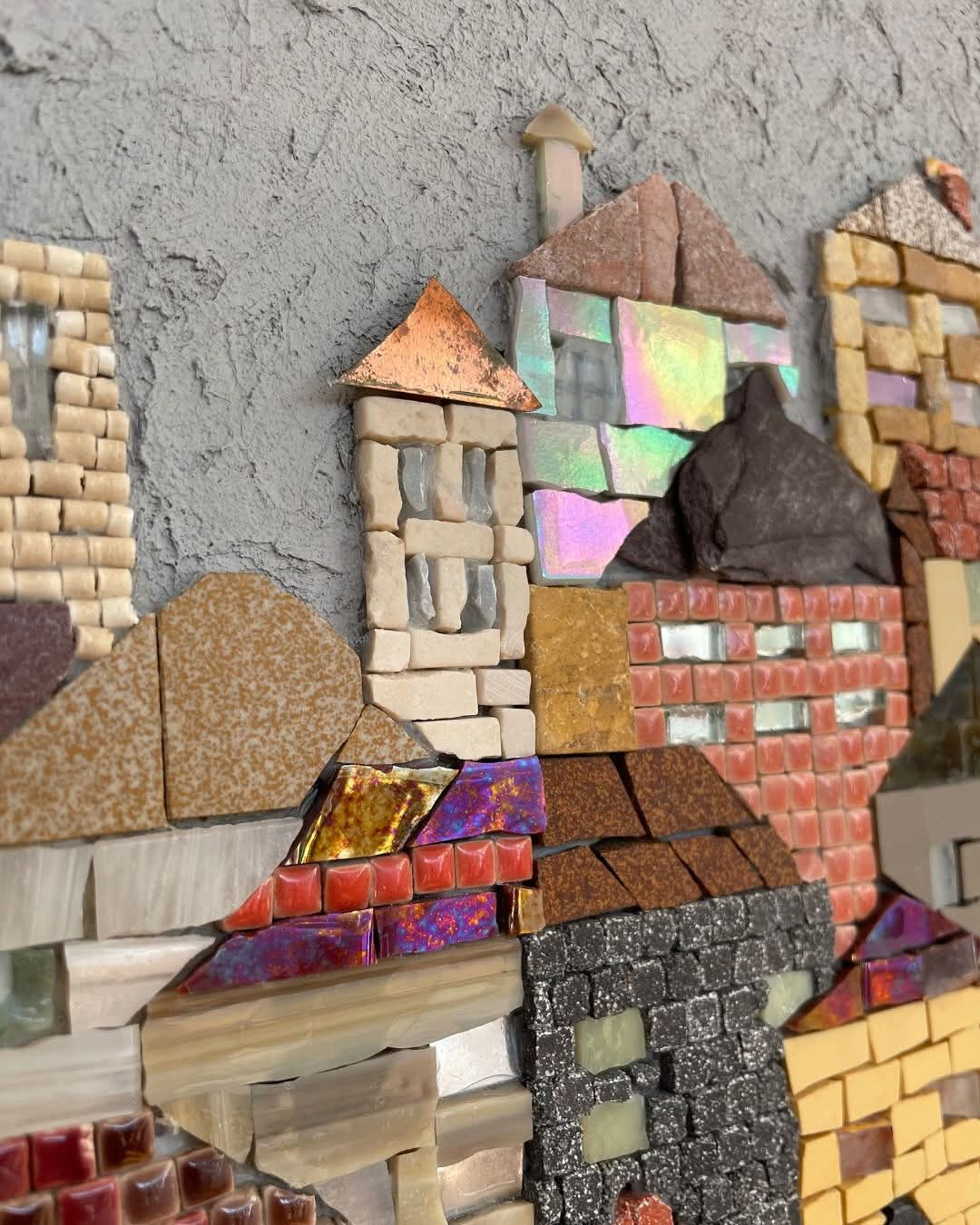
Neighbourhood Watch by Nicky Tudor celebrates the quiet strength of community – the everyday acts of care that bind neighbours together. Tudor has transformed the spirit of connection into a richly textured mosaic. Tudor assembles unglazed ceramic, stained and glazed tile, beads, bamboo skewers, marble, aluminium, copper, and mirrored fragments. Each material in the mosaic catches the light differently, like individual voices in a collective harmony. It’s a radiant tribute to the beauty of togetherness and the resilience of shared humanity.
When viewed as a whole, the wall of 65 mosaics functions as a musical score, where each work is a note contributing to a complex, cross-cultural symphony. Some of the works stand out for their luminosity, such as those created with iridescent blue glass that evoke water or the sky. Other works anchor the composition in earth tones and heavy textures. The natural tendency to interpret narrative or emotion in patterns makes it impossible to avoid reading the individual mosaics as a cohesive unit. The viewer’s eye moves from one fragment to another, following the visual threads of technique and colour that run through the wall like invisible lines of communication between the artists.
The decision by the curator to limit the works to uniform dimensions was crucial to the success of the exhibition. The decision eliminated hierarchy and emphasized dialogue. A larger-than-average mosaic could have asserted dominance through size alone; here, all the pieces share equal space, and require the viewer to focus on nuances rather than sheer scale. The exhibition rewards prolonged viewing. Each panel of the mosaic reveals subtle decisions: the tension between smooth and rough surfaces, the contrast between precise and spontaneous cutting, and so forth. Those contradictions mirror the collaborative process itself, where compromise and conflict can be creative catalysts.
. Piece Together locates mosaic in terms of collaborations, processes and global exchanges and therefore places mosaic within discussions of conceptual and social practice art. The artworks presented here are not just visual or aesthetic; they represent a record of communication, dialogue, and mutual trust. Each joint, each line of grout, serves as a testament to numerous decisions and layers of authorship.
Piece Together also acquires additional significance due to the inclusion of documents detailing the collaboration between Turner Prize winner Jeremy Deller and Coralie Turpin. Working with local communities, environmentalists, and archaeologists, the two artists created a permanent public mosaic installation on Scarborough Sea front. Inspired by Scarborough’s Roman past and the rich marine life of the local coastline, the work- Roman Mosaic c.2025 – forms part of the new Sea Watching Station on Marine Drive. This inclusion of documentation regarding the project, in the form of ephemera and preparatory materials, extends the conceptual scope of the exhibition. Piece Together thereby positions mosaic as a democratic art form which can connect local experience with global issues of environment, heritage and collective identity.
Both the intimate and the monumental, are represented in Piece Together. There are works which function in the manner of personal meditation, exploring texture and rhythm as metaphors for memory or emotion. There are works that directly address social or environmental concerns, utilizing recycled materials and/or found fragments as statements on sustainability. The inherent need to reuse and recombine in mosaic lends itself to such themes. In some of the artworks, the tesserae contain fragments of porcelain, mirror, or broken tile, and each fragment retains a remnant of its former life. The disparate components of these fragments achieve new coherence through careful placement, and reinforce the exhibitions’ overall message: that beauty and meaning arise from unity, not uniformity.
Formally, most of the artists in this exhibition resist the flatness that has traditionally been associated with mosaic. Relief and three-dimensional layering are common characteristics of these artworks. Examples include an abstract composition featuring alternating bands of red and orange. Additionally, there are surfaces which are intentionally irregular and force the viewer to interact with the tactile aspects of the medium. Such formal choices position mosaic back to its material basis, while liberating it from the attempt to imitate painting. The artists do not strive to create the illusion of depth, but instead, acknowledge the physical presence of stone and glass. The artworks appear to “breathe” with the rhythmic process of creating them, and surfaces rise and fall in a manner reminiscent of geological formations.
While the collaborative premise of the exhibition could easily lead to thematic repetition, the variety of results maintains the vitality of the exhibition. Some combinations of artists have resulted in harmonious blends of styles, while other combinations have resulted in deliberate dissonance. Where two artists with different sensibilities have combined their approaches, the resulting tension is evident in the structural elements of the artwork: sudden changes in the size, colour, or orientation of tesserae indicate the intersection of two sets of hands. The visible seams between these two sets of hands serve as metaphors for dialogue, indicating where two individuals have communicated and resolved differences and disagreements.
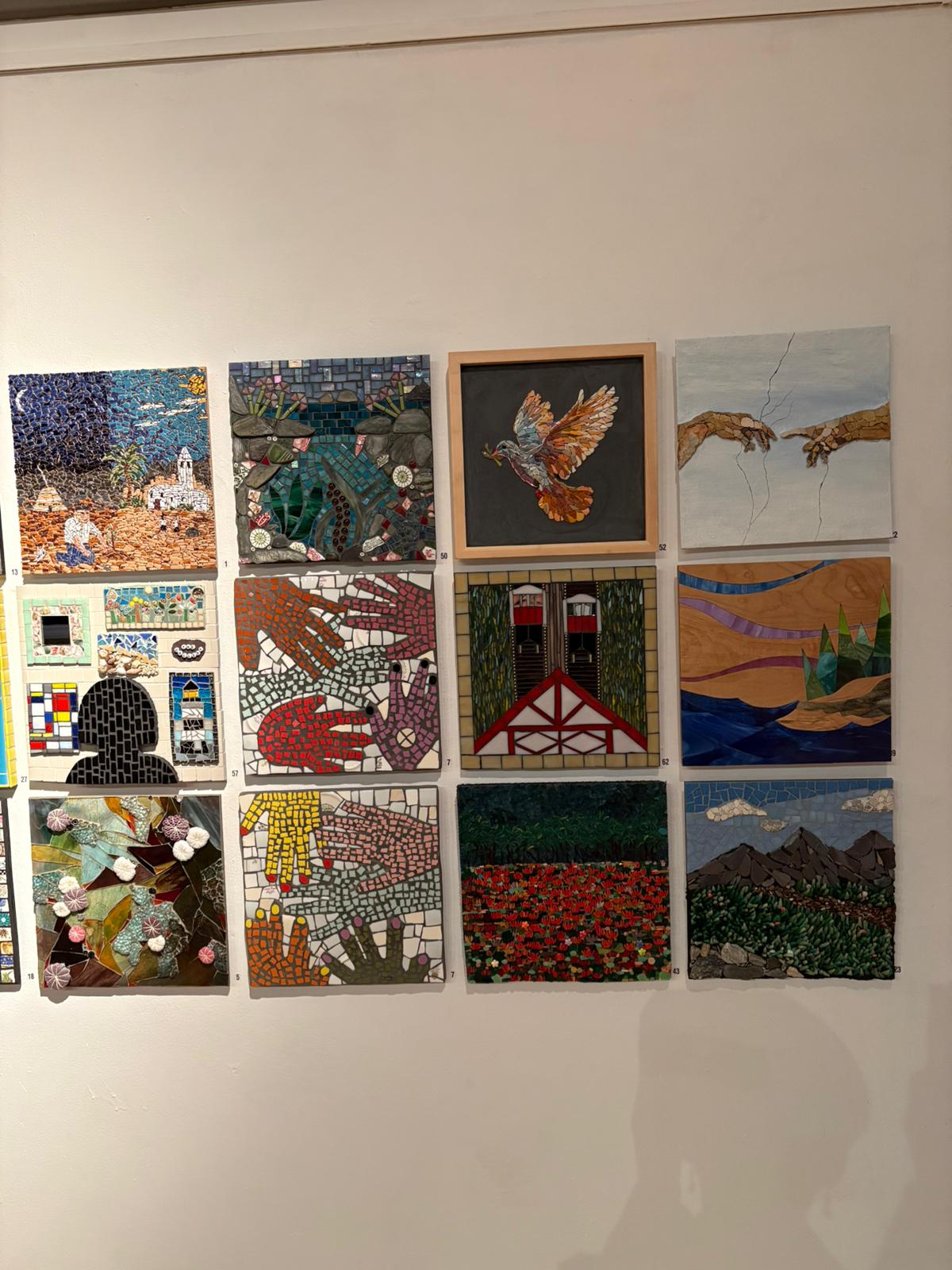
One of the successes of ‘Piece Together’ lies in how it transforms mosaic into a language of time. Each tessera represents a decision that has been frozen in time, yet collectively, the tesserae express movement and rhythm. The labor involved in cutting and placing tesserae is slow and meditative, and thus, it stands in direct opposition to the rapid pace of contemporary digital culture. As such, Piece Together functions as a quiet resistance to the rapid pace and isolation of modern society. Piece Together provides a reminder that creative endeavors can be communal acts of patience, and that dialogue can be sustained over distance and delays.
This aspect is heightened by the fact that the exhibition is located within the Scarborough Museum & Gallery. The white walls and soft natural light provide the perfect conditions for the artworks to demonstrate themselves without distraction. Light reflects off the glass, and textures change as the light changes, much like how dialogue changes based upon who is speaking and when. The spatial rhythm of the installation invites the viewer to walk through and revisit the installation. The installation viewed from a distance appears as one large tapestry, while up close, it breaks down into hundreds of separate decisions. The viewer oscillates between viewing the installation as a whole, and individually viewing the myriad of decisions that comprise it, mirroring the process of collaboration itself.
It should be stated that ‘Piece Together’ is an exploration of empathy. Collaborating with mosaic requires not only trust in another artist, but also trust in the ability of the material to unite elements. The title of the exhibition is a clear statement of this trust. While the title of the exhibition clearly states the concept of literal assembly, it also conveys the psychological process of assembling perspectives, aesthetics, and experiences. The final product is not a unified whole, but rather a mosaic of voices that retain their individuality while contributing to a greater shared entity.
About BAMM
Founded in 1999, The British Association for Modern Mosaic (BAMM) is a membership organisation which aims to promote, encourage and support excellence in contemporary mosaic art in order to raise public awareness of mosaic and of the artists creating it.
These vibrant mosaics are best viewed in person, so if you can make it to Scarborough to visit the exhibition, please do.! You won’t be disappointed.!
The Piece Together exhibition continues until 14th November 2025 at Woodend Gallery, curated and managed by Crescent Arts.
Website: bamm.org.uk
